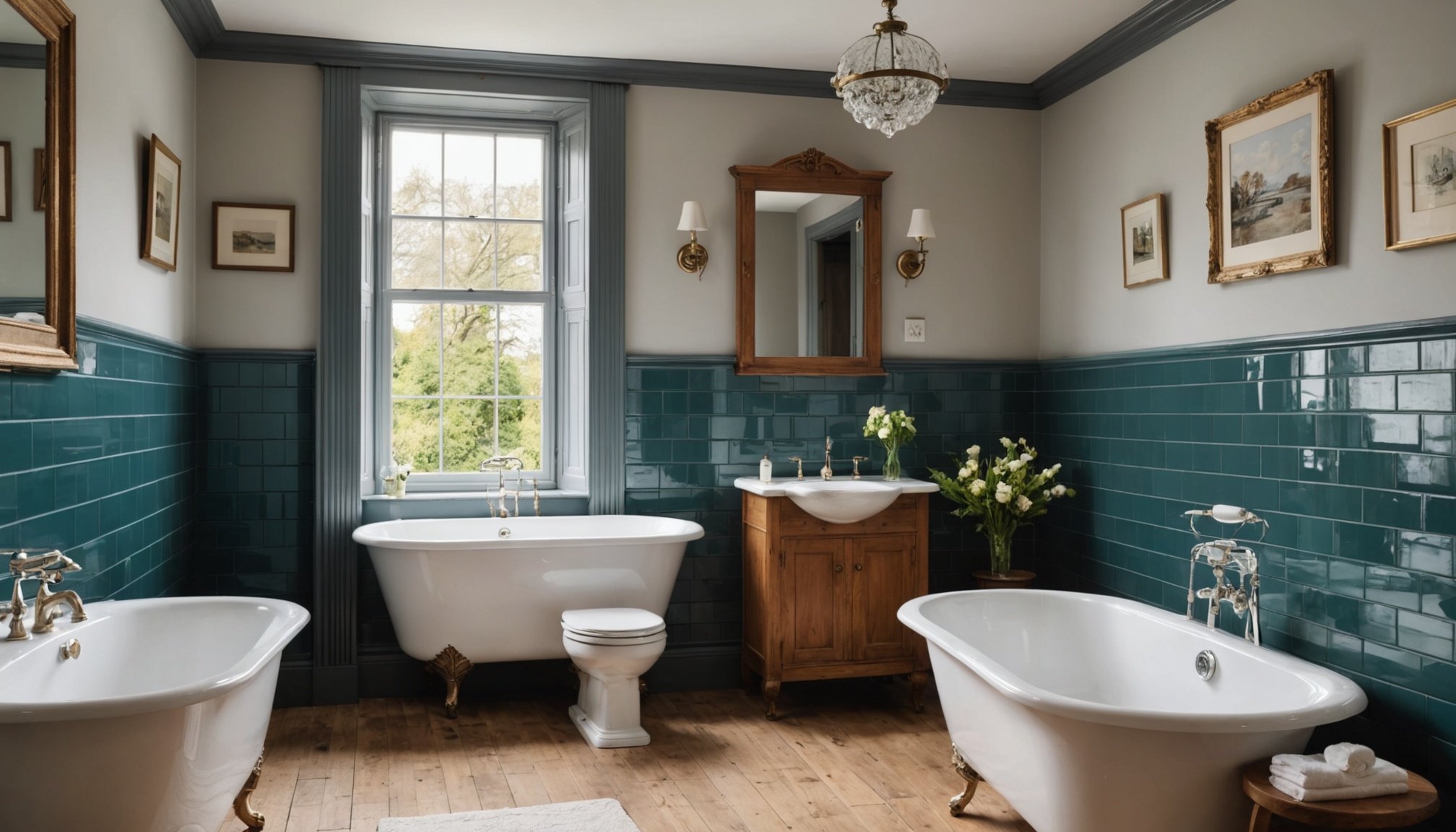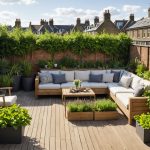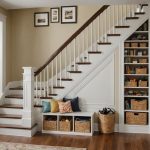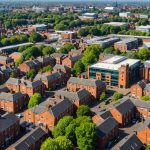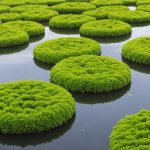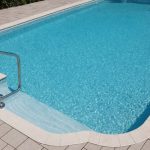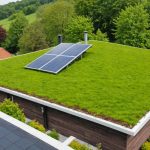Transforming an Edwardian bathroom into a water-efficient oasis not only preserves its historic charm but also benefits the environment. By implementing smarter fixtures, selecting sustainable materials, and embracing clever design, you can reduce water waste while enhancing comfort. Discover practical tips that balance timeless elegance with modern sustainability, ensuring your bathroom stands as a testament to both style and responsibility. Embrace change and make your home a greener place today!
Understanding Edwardian Architecture and Its Unique Challenges
Edwardian architecture, spanning from 1901 to 1910, is renowned for its elegant simplicity and functional design. Characterised by a blend of Victorian intricacy and modern minimalism, Edwardian homes often feature large bay windows, ornate fireplaces, and timber-framed porches. These elements contribute to the charm and historical significance of the style.
Avez-vous vu cela : Unlocking Small Kitchen Potential: Creative Ways to Optimize Space with Multi-Functional Furniture in Your UK Home
Renovating Edwardian homes presents unique challenges, primarily due to the need to balance modern amenities with historical design integrity. Homeowners often face issues such as outdated plumbing and electrical systems, which require careful upgrading without disrupting the original architectural features. Additionally, the use of materials like red brick and terracotta in construction necessitates specialised restoration techniques to maintain authenticity.
Preserving the historical integrity of Edwardian architecture during renovations is crucial. This involves adhering to guidelines that protect the structure's original design while integrating contemporary elements. Renovators must often collaborate with conservation experts to ensure that updates do not compromise the home's historical value. By doing so, they honour the architectural legacy while enhancing the home's functionality for modern living.
A voir aussi : Mastering UK Bathroom Design: Tips for Thriving in High Humidity
Water-Efficient Fixtures and Appliances
Incorporating water-efficient fixtures and eco-friendly appliances into Edwardian homes can significantly enhance bathroom sustainability. Modern water-saving toilets are designed to use less water per flush, often featuring dual-flush systems. These allow users to select a low or high volume flush, conserving water and reducing utility bills.
High-efficiency showerheads and faucets are another sustainable choice. These fixtures maintain strong water pressure while using less water, thanks to innovative aerating technology. By reducing water flow without sacrificing performance, they contribute to both environmental conservation and cost savings.
Eco-friendly appliances in bathrooms extend beyond fixtures. Energy-efficient water heaters, for example, can significantly decrease energy consumption. Additionally, installing water-saving dishwashers and washing machines helps conserve water and energy, aligning with sustainability goals.
Integrating these modern solutions into Edwardian homes requires careful planning to preserve historical aesthetics. By selecting fixtures and appliances that complement the architectural style, homeowners can achieve a harmonious blend of tradition and innovation. This approach not only supports environmental sustainability but also enhances the functionality and efficiency of the bathroom space.
Sustainable Materials for Bathroom Renovations
Incorporating sustainable materials into bathroom renovations is essential for an eco-friendly renovation and aligning with green building principles.
Recommended Sustainable Materials
When selecting materials, consider options like bamboo or cork for flooring. These are rapidly renewable resources, offering durability and a natural aesthetic. For surfaces, recycled glass tiles provide an elegant touch while reducing environmental impact.
Benefits of Recycled or Reclaimed Materials
Using recycled or reclaimed materials not only conserves resources but also adds unique character to your bathroom. Reclaimed wood, for example, introduces warmth and history, while recycled metal fixtures can offer a modern, industrial feel. These materials often require less energy to produce, supporting a greener renovation process.
Choosing Non-Toxic Paints and Finishes
Opt for non-toxic paints and finishes to ensure a healthier indoor environment. Look for products labeled as low-VOC (volatile organic compounds), which emit fewer harmful chemicals. This choice improves air quality and aligns with sustainable living practices.
By integrating these materials, homeowners can create a bathroom space that is both environmentally responsible and aesthetically pleasing, all while maintaining the charm and character of Edwardian architecture.
Design Ideas that Respect Edwardian Style
Creating an Edwardian bathroom design that respects the period's aesthetics while incorporating modern updates requires a careful approach. Period-appropriate renovations are essential to maintain the architectural harmony of the home.
When updating, consider colour palettes that reflect the Edwardian era. Soft pastels, muted greens, and blues, paired with white or cream, can enhance the historical feel. These colours complement the intricate details typical of Edwardian architecture, such as crown mouldings and decorative tiles.
To ensure architectural harmony, select fixtures and fittings that blend seamlessly with the original style. For instance, choosing freestanding bathtubs with claw feet or pedestal sinks can help maintain the period's charm. Incorporating vintage-style taps and lighting fixtures can also enhance the space's authenticity.
Integrating modern functionality without compromising design is key. Opt for underfloor heating or discreetly placed modern amenities that do not detract from the historical aesthetic. This approach allows for a functional, comfortable space that honours the Edwardian legacy.
By thoughtfully combining these elements, homeowners can achieve a bathroom design that respects the past while embracing the conveniences of the present.
Regulations and Financial Incentives for Water Efficiency
In the UK, water efficiency regulations play a crucial role in guiding renovations, especially for historical homes. These regulations ensure that any updates to properties, like Edwardian homes, adhere to modern sustainability standards. Compliance with these regulations not only contributes to environmental conservation but also enhances the home's value.
Homeowners can benefit from various financial incentives and renovation grants aimed at promoting eco-friendly improvements. The UK government offers grants to support the installation of water-efficient fixtures and appliances, making sustainable upgrades more affordable. These incentives encourage the integration of modern technologies that align with water efficiency goals.
Navigating the available financial options can be challenging, but several resources are designed to assist homeowners. Local councils often provide information on eligibility and application processes for grants. Additionally, online platforms and government websites offer comprehensive guides on how to maximise these financial incentives.
By leveraging these resources, homeowners can effectively plan their renovations, ensuring compliance with regulations while taking advantage of financial support. This approach not only facilitates the preservation of historical architecture but also promotes sustainable living practices.
Inspirational Case Studies of Edwardian Bathroom Transformations
Exploring bathroom renovation case studies offers valuable insights into transforming Edwardian homes while respecting their historical essence. These transformation examples showcase how homeowners have successfully integrated modern amenities with traditional design.
One notable case involves a London homeowner who embraced eco-friendly fixtures, such as dual-flush toilets and aerated faucets, in their Edwardian bathroom. The renovation preserved the period's charm by incorporating vintage-style tiles and a freestanding bathtub. This project highlights the importance of balancing sustainability with historical aesthetics.
Another homeowner success story features a couple in Manchester who transformed their Edwardian bathroom using reclaimed materials. They opted for recycled glass tiles and a reclaimed wood vanity, blending modern sustainability with classic design. Their approach demonstrates how using recycled materials can enhance both environmental consciousness and the room's unique character.
Key takeaways from these projects include the importance of planning and collaboration with experts. Homeowners emphasised the need to maintain architectural harmony while introducing water-efficient solutions. These lessons learned from real-life projects serve as inspiration for those aiming to modernise their Edwardian bathrooms without compromising on style or sustainability.

